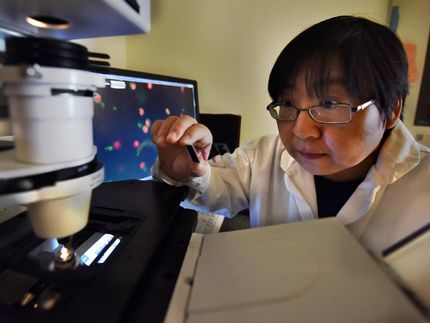Lengthening time a drug remains bound to a target may lead to improving diagnostics, therapy
Advertisement
Studies led by Stony Brook University professor of chemistry Peter J. Tonge indicate that modifications that enhance the time a drug remains bound to its target, or residence time, may lead to better diagnostic and therapeutic agents. Tonge presented these results at the American Society for biochemistry and Molecular Biology's annual meeting in a talk titled "Slow Onset inhibitors of Bacterial Fatty Acid Biosynthesis: Residence Time, In Vivo Activity and In Vivo Imaging."
"Our research team believes that many drugs are effective because they have long residence times on their target," says Tonge, Director of Infectious Disease Research at the Institute for Chemical Biology & Drug Discovery. "This concept has largely been ignored by investigators, and residence time is not usually incorporated into the drug discovery process."
Tonge explains that most drug discovery efforts obtain only data on the thermodynamic affinity of the drug for its target, measurements that are made at constant drug concentration. However, the Stony Brook University-led research factors in residence time, which he emphasizes is critical for activity in vivo where drug concentrations fluctuate with time.
"The central component of our work is that the length of time a drug remains bound to a target is very important for the activity of the compound in vivo," he adds.
Tonge, together with collaborators at Colorado State University and the University of Würzburg in Germany, have developed a series of compounds that inhibit an enzyme target from Francisella tularensis, where the in vivo antibacterial activity of the compounds correlates with their residence time on the target and not with their thermodynamic affinity for the target. This resulted in a direct correlation between residence time and in vivo activity against an infectious agent.
The research team has also developed a long residence time inhibitor of an enzyme drug target in Mycobacterium tuberculosis and demonstrated that this compound has antibacterial activity in an animal model of tuberculosis.
Because compounds with long residence times should accumulate in bacteria, Tonge explains that the research may lead to the development of agents to image bacterial populations in vivo using positron emission tomography. He says that researchers could then further the concept and develop a method for non-invasive imaging of bacterial populations in humans for both diagnostic purposes and also to monitor bacterial load during drug therapy, thereby helping to chart a drug's effectiveness against bacterial infection.


























































